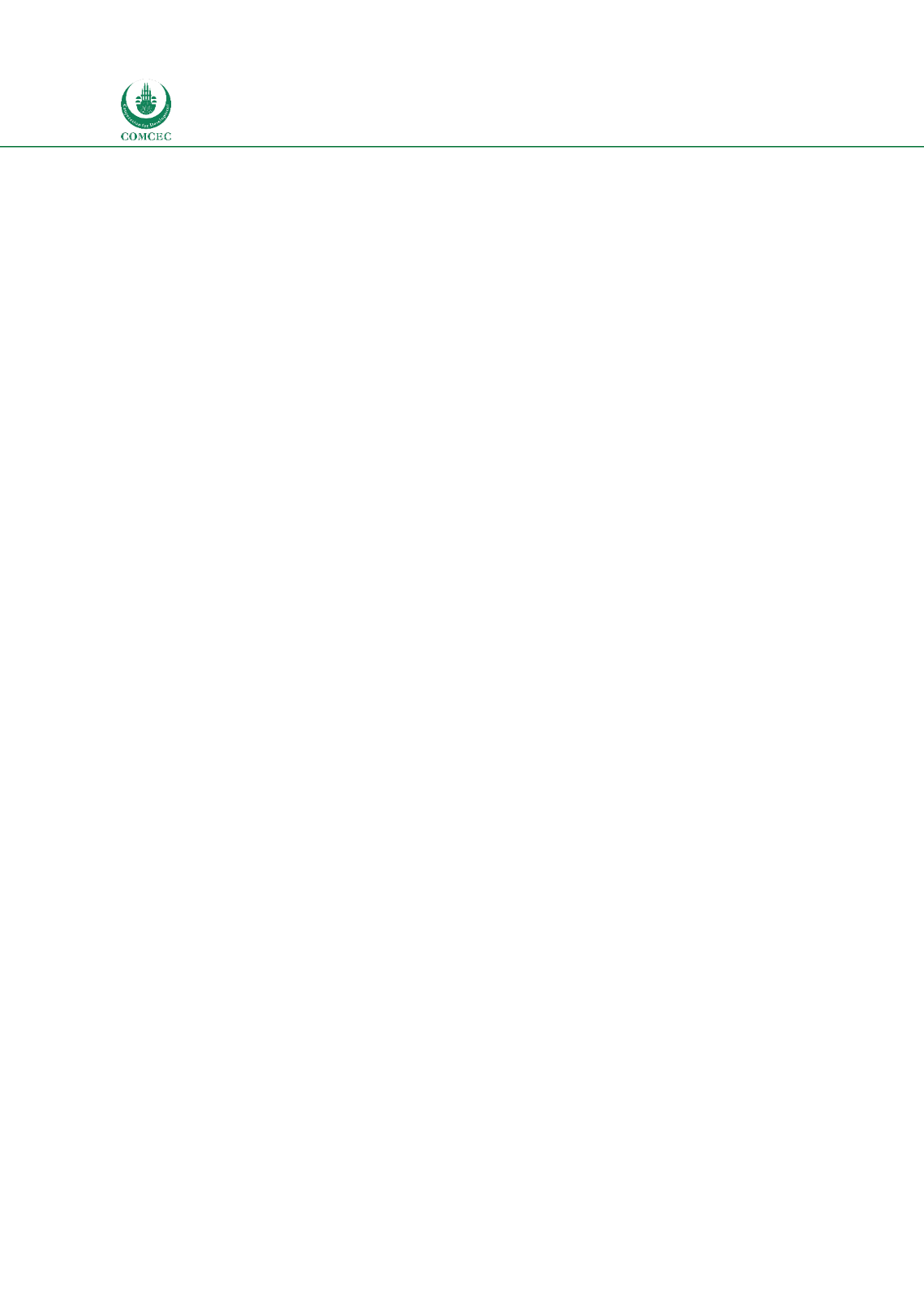

National and Global Islamic Financial Architecture:
Problems and Possible Solutions for the OIC Member Countries
106
4.6.5. Information Infrastructure and Transparency
Accounting and Auditing framework/Transparency and Disclosure
Title 3 of the Islamic Banking Regulatory Framework provides details of the accounting
standards, auditing framework, reporting, transparency and disclosure requirements to be
adopted by Islamic banks, Islamic windows and Islamic branches of foreign banks. Islamic
banks are required to follow Financial Accounting Standards (FAS) issued by AAOIFI and can
use IFRS where AAOIFI standards are not available. Islamic windows/branches in the country
are required to follow AAOIFI’s accounting and auditing standards with the condition that the
parent conventional bank would consolidate the financial statements using IFRS (CBO, 2012).
Furthermore, external auditors are required to use AAOIFI’s auditing standards and also
standards on Auditing Assurance issued by IAASB where applicable (CBO, 2012).
All organizations in Oman are legally required to be transparent and disclose adequate
information and there is a penalty for non-compliance. Islamic financial institutions are
required by regulations to adopt AAOIFI and IFSB standards on transparency and disclosure.
Moreover, Islamic banks, Islamic windows/branches in the country are required to prepare
and submit the financial position and profit and loss account each year in accordance with
AAOIFI standards (CBO, 2012). The sukuk regulation that is under the final stage of approval
will deal with transparency and information that need to be disclosed in sukuk prospectuses
(CMA).
Rating Agencies
CMA regulates ratings agencies in Oman. However, there is no registered rating agency in the
country, so international ratings agencies provide credit ratings for financial institutions.
However, there is no international ratings agency that provides
Shariah
rating of Islamic banks
and
sukuk
structures in Oman as the market is still new and small.
4.6.6. Consumer Protection Architecture
Consumer Protection and Financial Literacy
Abiding by the Consumer Protection Law issued by Royal Decree 81/2002 and amended in
2014 by Royal Decree 66/2014, the public Authority of Consumer Protection (ACP) is very
active in Oman. The law consists of five chapters and consumer rights are explained in chapter
two. In case of unfair treatment at any time, consumers can call the hotline of Public Authority
for Consumer Protection. They will answer immediately and guide them on how to solve the
case. Members of Public Authority for Consumer Protection in the county are well trained.
Along with the Public Authority for Consumer Protection, customers of banks and financial
institutions which are supervised by Central Bank of Oman (CBO) can reach the Customer
Services Center at CBO in which their complaints will be registered and followed up with
concerned department/organizations to resolve the case. Besides the Consumer Protection
Law, IBRF covers consumer protection issues that are specific to Islamic financial institutions
and institutions are encouraged to use IFSB guiding principles on Governance and Conduct of
Business Standards used by regulators in Oman (IBRF 2012).
















